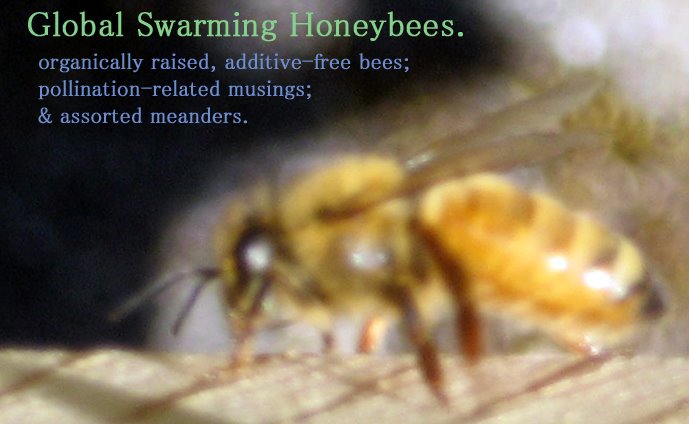The tiny clocks in bees and flowers: read all about it here.
Well, ask and ye shall receive, right? Tonight, skidding 'round the New York Times website, I was rather astonished to see this AP headline: Archaeologists Discover Ancient Beehives.
Here's the deal:
JERUSALEM (AP) -- Archaeologists digging in northern Israel have discovered evidence of a 3,000-year-old beekeeping industry, including remnants of ancient honeycombs, beeswax and what they believe are the oldest intact beehives ever found.
The findings in the ruins of the city of Rehov this summer include 30 intact hives dating to around 900 B.C., archaeologist Amihai Mazar of Jerusalem's Hebrew University told The Associated Press. He said it offers unique evidence that an advanced honey industry existed in the Holy Land at the time of the Bible.
Beekeeping was widely practiced in the ancient world, where honey used for medicinal and religious purposes as well as for food, and beeswax was used to make molds for metal and to create surfaces to write on. While bees and beekeeping are depicted in ancient artwork, nothing similar to the Rehov hives has ever been found before, Mazar said.
The beehives, made of straw and unbaked clay, have a hole at one end to allow the bees in and out and a lid on the other end to allow beekeepers access to the honeycombs inside. They were found in orderly rows, three high, in a room that could have accommodated around 100 hives, Mazar said.
The Bible repeatedly refers to Israel as a ''land of milk and honey,'' but that's believed to refer to honey made from dates and figs -- there is no mention of honeybee cultivation. But the new find shows that the Holy Land was home to a highly developed beekeeping industry nearly 3,000 years ago.
''You can tell that this was an organized industry, part of an organized economy, in an ultra-organized city,'' Mazar said.
At the time the beehives were in use, Mazar believes Rehov had around 2,000 residents, a mix of Israelites, Canaanites and others.
Ezra Marcus, an expert on the ancient Mediterranean world at Haifa University, said Tuesday the finding was a unique glimpse into ancient beekeeping. Marcus was not involved in the Rehov excavation.
''We have seen depictions of beekeeping in texts and ancient art from the Near East, but this is the first time we've been able to actually feel and see the industry,'' Marcus said.
The finding is especially unique, Marcus said, because of its location in the middle of a thriving city -- a strange place for thousands of bees.
This might have been because the city's ruler wanted the industry under his control, Marcus said, or because the beekeeping industry was linked to residents' religious practices, as might be indicated by an altar decorated with fertility figurines that archaeologists found alongside the hives.









